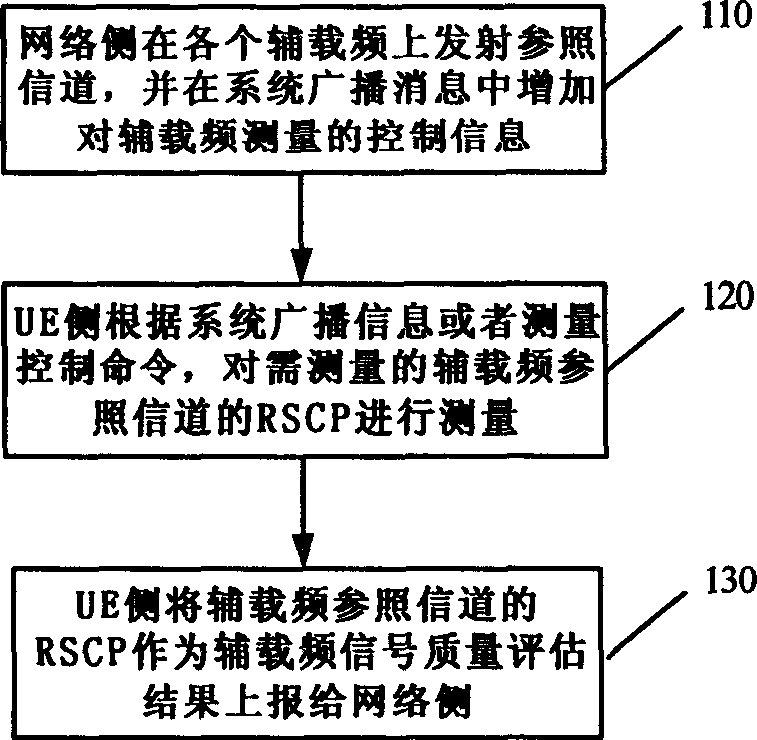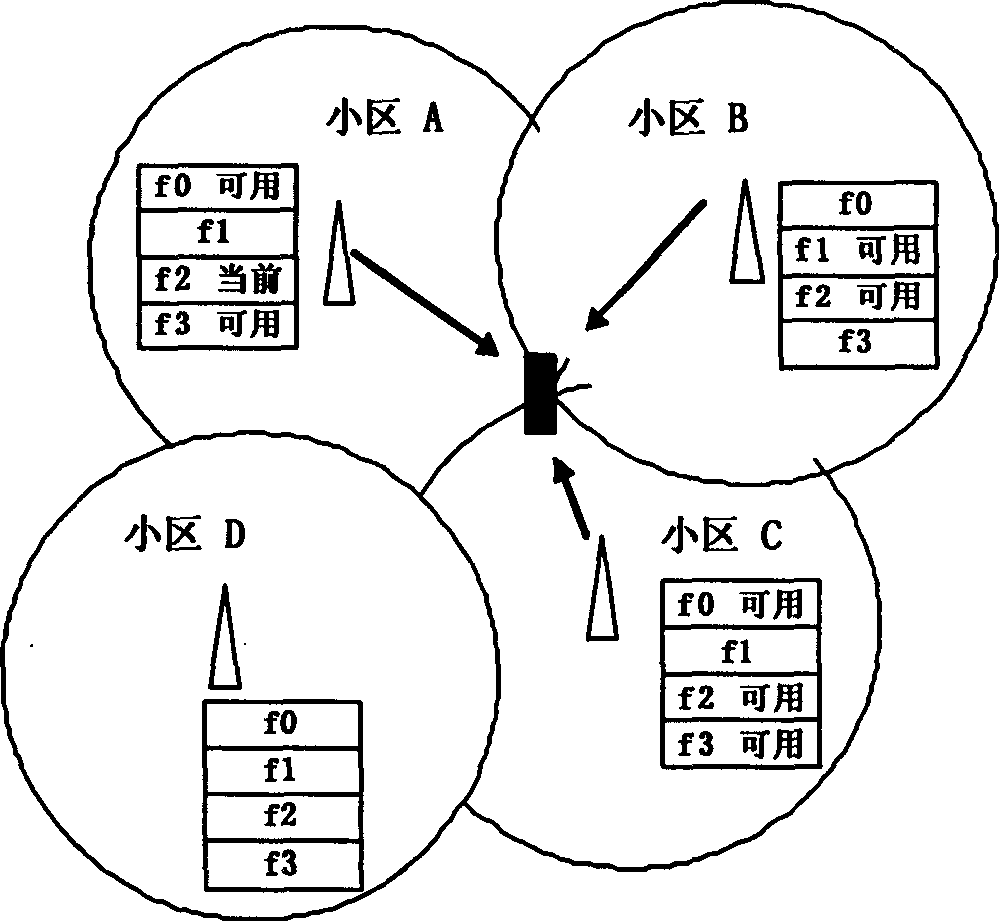Auxiliary carrier signal quality estimating and carrier selecting method for TD-SCDMA system
A technology of signal quality and secondary carrier frequency, applied in signal quality evaluation and carrier frequency selection, in the field of evaluating secondary carrier frequency signal quality, it can solve the problem of only considering the load situation, the decrease of call quality, and the inability to measure and evaluate the quality of secondary carrier frequency signals. To ensure the quality of the carrier frequency channel, avoid blind handover, and achieve the effect of effective frequency resource allocation process
- Summary
- Abstract
- Description
- Claims
- Application Information
AI Technical Summary
Problems solved by technology
Method used
Image
Examples
Embodiment Construction
[0047] Such as figure 1 As shown, the specific embodiment that the present invention evaluates the secondary carrier frequency signal quality in the TD-SCDMA system by the secondary carrier frequency reference channel comprises the following steps:
[0048] Step 110, the network side transmits the reference channel on each auxiliary carrier frequency, and adds control information on auxiliary carrier frequency measurement in the system broadcast message;
[0049] Step 120, the UE side starts the measurement process according to the system broadcast information or the measurement control command, and measures the received signal code power (RSCP) of the secondary carrier frequency reference channel to be measured;
[0050] In step 130, the UE side reports the RSCP of the secondary carrier frequency reference channel to the network side as a secondary carrier frequency signal quality evaluation result.
[0051] In the above step 110, the transmitted secondary carrier frequency ...
PUM
 Login to View More
Login to View More Abstract
Description
Claims
Application Information
 Login to View More
Login to View More - R&D
- Intellectual Property
- Life Sciences
- Materials
- Tech Scout
- Unparalleled Data Quality
- Higher Quality Content
- 60% Fewer Hallucinations
Browse by: Latest US Patents, China's latest patents, Technical Efficacy Thesaurus, Application Domain, Technology Topic, Popular Technical Reports.
© 2025 PatSnap. All rights reserved.Legal|Privacy policy|Modern Slavery Act Transparency Statement|Sitemap|About US| Contact US: help@patsnap.com



